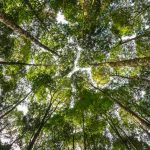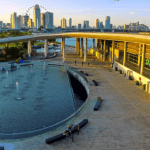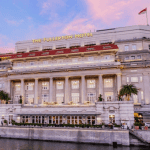Hokkaido, the second-largest island of Japan, is a destination known for its stunning natural landscapes, rich cultural heritage, and delicious cuisine. If you’re planning a trip to Hokkaido and want to make the most of your time there, creating a well-thought-out itinerary is crucial. In this article, we will guide you through planning the perfect 5-day itinerary for Hokkaido, ensuring that you experience the best this beautiful island has to offer.
Understanding Hokkaido: A Brief Overview
Hokkaido, located in the northernmost region of Japan, boasts a diverse range of attractions and experiences. Before diving into the details of your itinerary, it’s essential to have a basic understanding of the island’s geography, climate, culture, and history.
Geography and Climate
Hokkaido is characterized by its stunning natural beauty, including mountains, lakes, and hot springs. The island experiences cold winters and mild summers, making it a popular destination for winter sports enthusiasts and nature lovers alike.
The geography of Hokkaido is defined by its volcanic origins. The island is home to several active volcanoes, including Mount Asahi, which stands as the tallest peak in Hokkaido. These volcanic formations have shaped the landscape, creating breathtaking vistas and unique geological features.
One of Hokkaido’s most famous natural attractions is Lake Toya, a volcanic caldera lake known for its crystal-clear waters and picturesque surroundings. Visitors can enjoy boat rides on the lake, soak in nearby hot springs, or take a leisurely hike along its scenic trails.
In addition to its mountains and lakes, Hokkaido is also renowned for its expansive flower fields. Furano, in particular, is famous for its lavender fields that bloom in vibrant shades of purple during the summer months. The sight of endless rows of fragrant lavender is a photographer’s dream and a must-visit for nature enthusiasts.
Culture and History
Hokkaido has a unique cultural heritage that sets it apart from the rest of Japan. Historically, the Ainu, an indigenous people, inhabited the island. Their rich culture and traditions still influence the region today. Visitors to Hokkaido can learn about the Ainu people’s way of life through museums, cultural centers, and traditional performances.
Aside from the Ainu, Hokkaido’s cultural landscape has been shaped by waves of migration and settlement. The island’s frontier-like atmosphere attracted settlers from the main islands of Japan in the late 19th century. These settlers brought with them their own customs, traditions, and culinary influences, resulting in a fascinating blend of cultures that can be experienced in Hokkaido’s vibrant cities and rural communities.
Hokkaido’s history as a frontier region also played a significant role in Japan’s development. The island’s vast and untamed wilderness presented opportunities for economic growth and resource exploitation. The development of industries such as agriculture, fishing, and forestry helped transform Hokkaido into the thriving and prosperous region it is today.
When visiting Hokkaido, it’s worth exploring the historical sites that showcase its unique past. Sapporo, the capital city, is home to several landmarks that highlight the island’s history, including the Former Hokkaido Government Building and the Sapporo Clock Tower.
Overall, Hokkaido’s geography, climate, culture, and history combine to create a truly captivating destination. Whether you’re seeking outdoor adventures in its majestic landscapes or immersing yourself in its rich cultural heritage, Hokkaido offers a world of unforgettable experiences.
Preparing for Your Trip to Hokkaido

As you embark on your Hokkaido adventure, it’s important to be well-prepared. These essential travel tips will help ensure a smooth and enjoyable journey:
Essential Travel Tips
– Hokkaido has four distinct seasons, so pack accordingly with layered clothing and appropriate gear.- Familiarize yourself with basic Japanese phrases to ease communication.- Purchase a Japan Rail Pass for convenient transportation across the island.- Make sure to have travel insurance to cover any unexpected circumstances.
What to Pack
When visiting Hokkaido, it’s crucial to pack essentials that will enhance your experience. Here are some items to consider including in your suitcase:
- Comfortable walking shoes for exploring Hokkaido’s natural wonders
- Warm clothing, including thermal layers, hats, gloves, and scarves, for the island’s chilly weather
- A reliable camera to capture the breathtaking landscapes
- Travel adapters for charging your electronic devices
- A travel guidebook or maps to navigate the island efficiently

Day 1: Exploring Sapporo
Your Hokkaido adventure begins in the vibrant city of Sapporo, known for its lively atmosphere and delicious culinary scene. Start your day off with a visit to the historic Sapporo Clock Tower, an iconic symbol of the city’s western influence. As you explore the city, be sure to take a stroll through Odori Park, a beautiful green space that hosts various events throughout the year.
Morning Activities
After immersing yourself in Sapporo’s history and natural beauty, head to the bustling Nijo Market. Here, you can taste a variety of fresh seafood and local delicacies, such as uni (sea urchin) and king crab. Don’t forget to try some Sapporo-style ramen, a beloved dish that originated in the city.
Afternoon Activities
With your hunger satisfied, continue your exploration by visiting the Hokkaido Historical Village. This open-air museum showcases traditional buildings from different periods in Hokkaido’s history, allowing you to step back in time and learn about the island’s rich cultural heritage.
Evening Activities
As the sun sets, make your way to Susukino, Sapporo’s entertainment district. Known for its vibrant nightlife, this area offers a plethora of dining options, bars, and clubs. Be sure to try Sapporo’s famous local beer and indulge in some mouth-watering grilled lamb at a yakiniku restaurant.
Day 2: Discovering Otaru
On your second day, venture outside of Sapporo and explore the charming coastal city of Otaru. Famous for its beautiful canal and glassworks, Otaru offers a delightful mix of history, art, and culinary delights.
Must-Visit Attractions
Start your day with a leisurely stroll along the Otaru Canal, a picturesque waterway lined with elegant buildings and old warehouses. Don’t miss the chance to visit the Otaru Music Box Museum, where you can admire an extensive collection of intricately designed music boxes.
Food and Drink Experiences
Otaru is also known for its mouth-watering seafood, particularly its fresh sushi and sashimi. Visit Sankaku Market, a bustling seafood market, to sample a variety of delectable treats. Don’t forget to try Otaru’s famous LeTAO cheesecake, a creamy and indulgent dessert that will delight your taste buds.
Day 3: Adventure in Furano and Biei
Your third day in Hokkaido is all about immersing yourself in its breathtaking natural wonders. Journey to Furano and Biei, two picturesque towns known for their stunning landscapes and vibrant flower fields.
Natural Wonders to Explore
Start your day by visiting Farm Tomita, a world-renowned lavender farm in Furano. Depending on the season, you can witness a kaleidoscope of colors as various flowers bloom throughout the year. Take a leisurely walk through the fields and enjoy the fragrance and beauty of the lavender.
Local Delights to Try
After exploring the flower fields, treat yourself to some delicious local cuisine. In Furano, try the region’s renowned melons, known for their juicy sweetness. In Biei, indulge in the famous Biei Wagyu beef, a tender and flavorful local delicacy that is sure to satisfy your taste buds.
By following this 5-day itinerary, you will have the opportunity to explore the diverse attractions Hokkaido has to offer, from vibrant cities to breathtaking natural wonders. Whether you’re a culture enthusiast, a nature lover, or a foodie, Hokkaido will leave you with unforgettable memories and a longing to return. Start planning your journey today and get ready to embark on a remarkable adventure in this captivating island.








